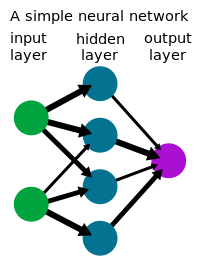
Mathematical Characteristics of Uplink and Downlink Interference Regions in D2D Communications Underlaying Cellular Networks
Sign Up to like & getrecommendations! Published in 2017 at "Wireless Personal Communications"
DOI: 10.1007/s11277-016-3936-y
Abstract: In this paper, mathematical characteristics of uplink and downlink interference regions in device-to-device (D2D) communications underlaying cellular networks are analyzed. We consider that one CUE and one pair of D2D user equipments (DUEs) coexist and… read more here.
Keywords: mathematical characteristics; interference; downlink interference; uplink downlink ... See more keywords

Large-Scale Modeling and Analysis of Uplink and Downlink Channels for LoRa Technology in Suburban Environments
Sign Up to like & getrecommendations! Published in 2022 at "IEEE Internet of Things Journal"
DOI: 10.1109/jiot.2022.3191639
Abstract: LoRaWAN is an Internet of Things (IoT) technology with super usability due to its ability to support low-power and long-range communications. However, implementation and optimization require path-loss (PL) modeling to estimate network coverage and performance.… read more here.
Keywords: technology; large scale; scale modeling; analysis ... See more keywords

Joint Uplink-Downlink Resource Allocation for D2D Underlaying Cellular Network
Sign Up to like & getrecommendations! Published in 2021 at "IEEE Transactions on Communications"
DOI: 10.1109/tcomm.2021.3116947
Abstract: Device-to-device (D2D) communication is an emerging 5G technology to improve spectrum efficiency and reduce data traffic load in wireless networks. In this paper, a joint uplink-downlink resource allocation (JUDRA) approach is presented to maximize the… read more here.
Keywords: d2d; resource allocation; allocation; uplink downlink ... See more keywords

Uplink Performance Improvement by Decoupling Uplink/Downlink Access in HetNets
Sign Up to like & getrecommendations! Published in 2017 at "IEEE Transactions on Vehicular Technology"
DOI: 10.1109/tvt.2017.2653799
Abstract: In dense and heterogeneous cellular networks (HetNets), significant imbalance between uplink (UL) and downlink (DL) transmissions may happen in regard to signal-to-interference-and-noise ratio and traffic load. Under this circumstance, decoupled UL/DL access (DUDA) is proposed… read more here.
Keywords: mode; duda mode; performance improvement; performance ... See more keywords

Learning How to Transfer from Uplink to Downlink via Hyper-Recurrent Neural Network for FDD Massive MIMO
Sign Up to like & getrecommendations! Published in 2022 at "IEEE Transactions on Wireless Communications"
DOI: 10.1109/twc.2022.3163249
Abstract: In order to unlock the full advantages of massive multiple-input multiple-output (MIMO) in the downlink, the base station (BS) must leverage information about the downlink fading channels. However, in frequency division duplex (FDD) systems, full… read more here.
Keywords: learning transfer; recurrent neural; mimo; uplink downlink ... See more keywords

Downlink Channel Estimation for FDD Massive MIMO Using Conditional Generative Adversarial Networks
Sign Up to like & getrecommendations! Published in 2023 at "IEEE Transactions on Wireless Communications"
DOI: 10.1109/twc.2022.3191605
Abstract: For implementation of massive multiple-input multiple-output (MIMO) cellular systems in frequency division duplex (FDD) mode, accurate estimation of downlink channel state information (CSI) is necessary, but full radio channel reciprocity between the uplink and downlink… read more here.
Keywords: downlink channel; fdd massive; mimo; massive mimo ... See more keywords

Multi-user Downlink Beamforming using Uplink Downlink Duality with CEQs for Frequency Selective Channels
Sign Up to like & getrecommendations! Published in 2022 at "IEEE Transactions on Wireless Communications"
DOI: 10.1109/twc.2023.3273197
Abstract: High-resolution fully digital transceivers are infeasible at millimeter-wave (mmWave) due to their increased power consumption, cost, and hardware complexity. The use of low-resolution converters is one possible solution to realize fully digital architectures at mmWave.… read more here.
Keywords: frequency selective; downlink duality; selective channels; uplink downlink ... See more keywords